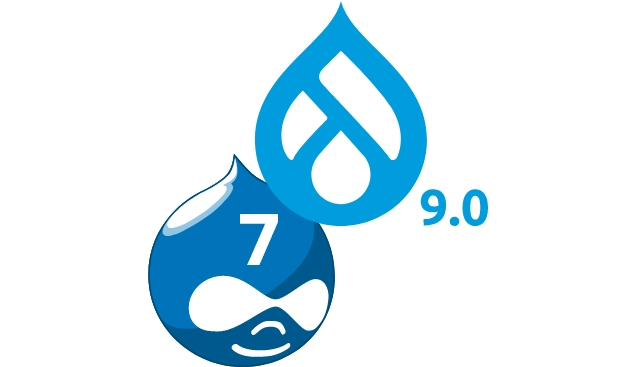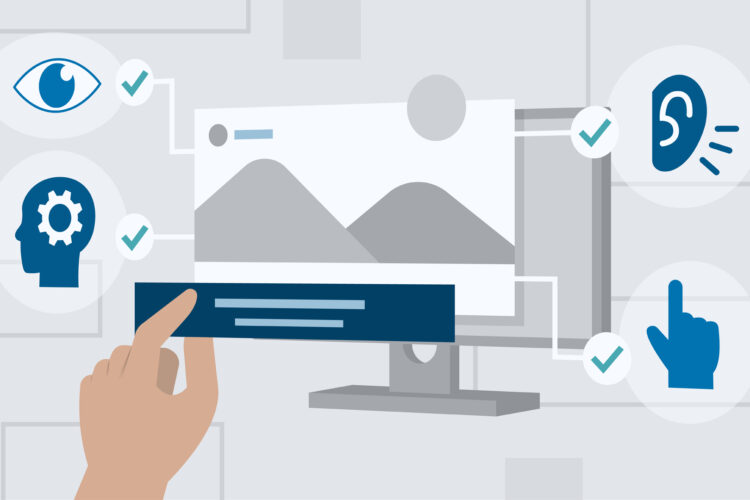
“So what’s in the store?”
We have all been questioned about both our personal and professional life on numerous occasions – What’s new where? These questions apply to software technology as well.
The latest answer to this is Drupal 9.
By upgrading to Drupal 9, you may take advantage of the continuous innovation cycle, which releases new capabilities twice a year. Future important updates will be significantly simpler once you complete your final large migration.
The latest version enhances the same organized content-based framework that you’ve come to adore. Create layouts with the visual layout builder built-in. Utilize blocks again and alter every aspect of the page.
Developers across the world love the development and production environment support of Drupal’s consolidated CMS.
Well, with Drupal 9, we’re in for more!
- Enhanced performance and security
- Easy upgrade process
- Data platform integration and personalization
- Conversational UI and user-friendliness including Optimized code structure and a cleaner codebase.
- Benefit from complete language support across all content and settings.
- Highly improved accessibility and keyboard navigation
- A mobile-first UI allowing for adjustments even from your mobile devices.
Why not Drupal 8?
Drupal 8’s end-of-life date approached back in November 2021. Even if your transition to Drupal 8 is successful, you’ll need to update again to Drupal 9 as the former is no longer supported.
If you have already switched to 8 then don’t worry – just make sure your site is running the most recent Drupal 8 version (8.9 as of this writing), your hosting environment satisfies the minimum system requirements, and all of your deprecated code has been removed if you are upgrading from Drupal 8 to Drupal 9.
Before we hop into the actual process, let us explore the reason why you should prefer Drupal 9 over any other version.
As soon as you decide to upgrade to Drupal 9, you must specify the scope of the migration by taking into account the main variables of this version.
Retroactive Compatibility
Backward compatibility is one of the new upgrade’s essential features. It becomes challenging to rapidly let go of the earlier versions. Additionally, upgrading must be a painless process for you. It implies that Drupal 8 and the most recent version will be compatible. The updated version is compatible with Drupal 8’s setups, modules, and data.
All in all, a smooth, painless transition.
Getting Rid of Deprecations
The developers get some time once the features are marked as deprecated before they are completely pulled away. You would soon lose support for the deprecated code, which is yet more incentive to migrate to Drupal 9.
The code has been made more nimble and cleaner in the most recent version, which will boost the speed of your websites.
Enhancing Performance
Traffic on mobile devices has grown over time. Drupal was fast to recognize this and made the necessary changes in Drupal 8’s features. The most recent version allows responsive pictures, taking things a step further. The optimal image sizes will now be displayed on smartphones, which also use less bandwidth.
In Drupal 9, there are several core modules that can improve the site’s performance. The Internal Page Cache, for example, assists in caching information for anonymous visitors, which makes it a crucial function.
How to Migrate from Drupal 7 to Drupal 9
Follow the given commands to reach your end goal:
- Fantastic Site Audit– Build a thorough site audit for your Drupal 7 website. A site audit is performed to find out how a website is currently functioning and assess whether any maintenance needs to be done. Every sort of functionality and entity type should be included in this comprehensive assessment (Modules, Content types, Taxonomies, Paragraphs, etc).
- Aptly Manage Your Content– Determine the structure and content categories of the current site, and then list the elements that need to be transferred. You should make a list of every piece of data that has to be transferred to your new website during your audit. Make sure nothing is duplicated or broken so that your Drupal 9 site is prepared for launch.
- Categories Modules– Make a list of all the modules on your Drupal 7 site to find any custom code or missing auxiliary features. The best approach to adapt the Drupal CMS for your unique requirements is using modules. It is important to keep in mind that particular modules occasionally have been modified or are not yet incompatible with a Drupal version. Additionally, keep an eye out for any unique modules that aren’t from the community repository.
- Starting the Migration– The creation of migration-related scripts and files is made simpler for programmers by a set of auxiliary modules. A distinct migration module for every site should be used to add fields, custom post kinds, and domains to the new Drupal website.
- Extra Efforts– Take out some time to theme your new website and carry out more manual labor. This involves making adjustments like picking a theme and organizing the material.
- Getting Hands on With– Voila ! Now that the migration has been completed successfully, it’s time to launch your Drupal 9 site! Here you go. It’s possible that you encounter certain roadblocks in the process, and would need to revisit your steps to make sure there’s no plain error. That being said, we believe that Drupal has made quite an effort this time, in reducing as much upgrade efforts as possible for its users.
In Conclusion:
To keep up with Drupal’s innovation cycle, it is highly advised to upgrade to version 9 or above. For Drupal 7 site owners who want to switch to Drupal 9, this article serves as a comprehensive roadmap.
We hope that the migration of your website goes smoothly and quickly. Post a comment below if you have any questions.


